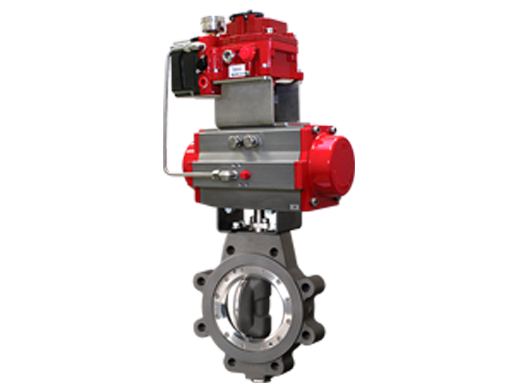How Control Valves Influence Power Efficiency in Industrial Settings
How Control Valves Influence Power Efficiency in Industrial Settings
Blog Article

Maximize Energy Financial Savings and Comfort With Advanced Structure Automation Controls
In the world of modern-day design and center administration, the integration of advanced building automation controls stands as a crucial innovation. By harnessing the power of automation, buildings can adjust, respond, and evolve in means that were as soon as inconceivable.
Energy Efficiency Benefits
Power efficiency advantages can significantly lower energy usage and functional expenses in structures. Energy-efficient systems, such as advanced structure automation controls, can enhance the usage of sources like home heating, lights, and cooling, leading to reduced energy expenses over time.
Moreover, improved power effectiveness can extend the lifespan of structure equipment and systems. By running much more successfully, cooling and heating systems, light, and various other building elements experience much less wear and tear, resulting in minimized maintenance and substitute expenses. Additionally, energy-efficient structures often regulate higher residential or commercial property values and rental rates, giving long-lasting monetary benefits to owners.
Moreover, energy effectiveness can boost occupant convenience and productivity. Effectively managed indoor atmospheres with ideal lighting and thermal problems create an even more favorable and pleasurable office, resulting in boosted worker fulfillment and performance. On the whole, the energy performance advantages connected with innovative structure automation controls are complex, encompassing cost financial savings, environmental stewardship, and owner well-being.
Improved Comfort Control
Enhancing convenience control in structure atmospheres requires a sophisticated combination of sophisticated automation systems for optimal resident wellness. By utilizing innovative building automation controls, centers can tailor the indoor atmosphere to satisfy the certain requirements and choices of owners. These systems enable exact regulation of temperature, lighting, and ventilation, producing a effective and comfortable environment. Occupant contentment and efficiency are very closely linked to thermal convenience, making it essential to have systems in location that can adjust to transforming conditions in real-time.
Improved convenience control surpasses basic temperature level adjustments. It consists of features such as personalized setups, tenancy sensors, and natural light usage to develop a dynamic and receptive environment. By incorporating these advanced controls, buildings can not only enhance comfort however additionally enhance energy effectiveness by enhancing system procedures based on real tenancy and usage patterns. Ultimately, prioritizing occupant comfort via advanced automation systems results in an extra delightful and much healthier interior environment.
Functional Performance Improvements

Additionally, the execution of real-time monitoring and analytics tools allows structure operators to recognize power ineffectiveness and operational anomalies immediately. By continuously checking energy use patterns and system performance metrics, adjustments can be made in real-time to enhance energy usage and make certain peak functional effectiveness. control valves. Additionally, integrating need response techniques into building automation controls can even more improve operational effectiveness by dynamically readjusting power usage based on grid problems and pricing signals
Indoor Climate Optimization
Efficient interior climate optimization is an essential facet of structure automation controls, guaranteeing residents' convenience and well-being while maximizing power financial savings. By using advanced sensing units and controls, developing automation systems can continually adjust and keep track of temperature, humidity degrees, air top quality, and air flow to create an optimum interior atmosphere. Maintaining comfy and constant conditions not just boosts passenger fulfillment however also increases productivity and total health.
Interior climate optimization also plays a vital duty in power performance. By fine-tuning home heating, air flow, and air conditioning systems based upon real-time information click to find out more and occupancy patterns, constructing automation controls can considerably decrease energy consumption - control valves. Applying strategies such as demand-controlled ventilation and thermal zoning can aid lessen energy waste while making certain that each area of the building gets the necessary conditioning.

Lasting Atmosphere Development
Building automation regulates not just maximize indoor environment problems for power effectiveness and passenger comfort but also lay the structure for producing a sustainable environment with strategic administration of systems and resources. By incorporating innovative building automation technologies, such as sensors, actuators, and intelligent software, centers can change and keep track of power usage in real-time to decrease waste and lower their carbon impact. These systems make it possible for predictive maintenance, determining potential problems prior to they rise and maximizing tools performance to boost longevity and effectiveness.
Furthermore, lasting atmosphere production extends past power administration to incorporate water conservation, waste reduction, and indoor air high quality improvement. Structure automation controls can manage water use, detect leakages, and make certain proper garbage disposal practices, adding to general sustainability efforts. In addition, by checking and managing air flow and purification systems, these technologies enhance passenger wellness and productivity while lowering power usage associated with cooling and heating operations.
Verdict
Finally, progressed building automation controls deal significant benefits in terms of power cost savings, convenience control, operational efficiency, interior climate optimization, and producing a sustainable setting. By applying these controls, structures can achieve optimum efficiency while reducing energy intake and improving passenger convenience. It appears that websites making use of advanced automation technology is crucial in enhancing structure performance and developing a much more lasting future.
Energy efficiency benefits can dramatically decrease energy intake and operational costs in buildings. Generally, the energy effectiveness benefits linked with sophisticated building automation controls are diverse, encompassing cost financial savings, ecological stewardship, and occupant wellness.
Furthermore, incorporating demand reaction techniques right into building automation controls can better enhance operational performance by dynamically changing power usage based on grid conditions and prices signals.
Structure automation manages not only maximize indoor environment conditions for energy effectiveness and passenger comfort yet likewise lay the structure for creating a lasting environment via tactical management of systems and resources.In final thought, advanced building automation manages offer significant benefits in terms of energy cost savings, comfort control, operational efficiency, indoor environment optimization, and developing a sustainable environment.
Report this page